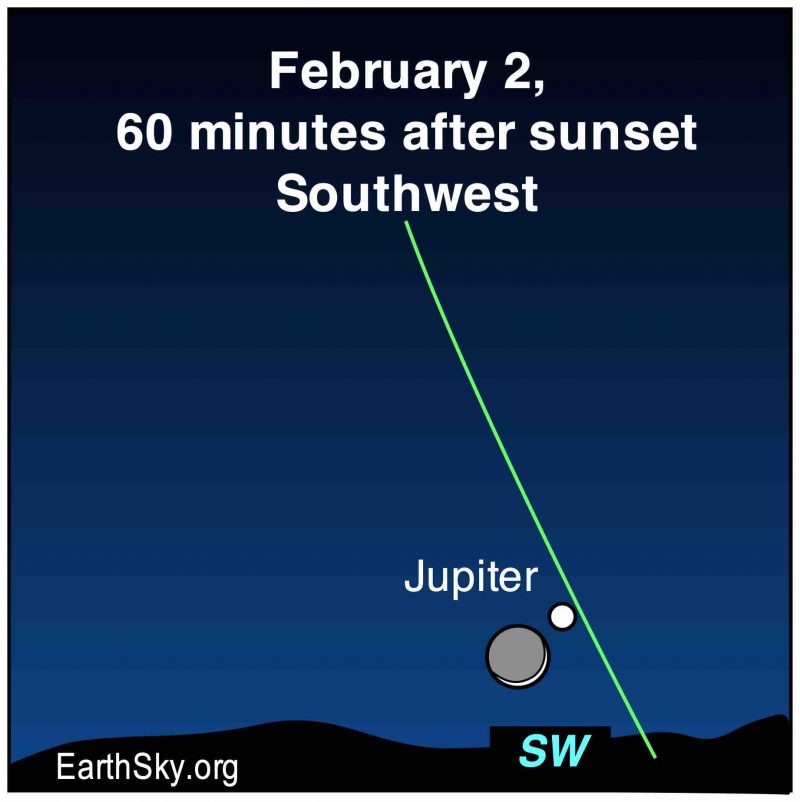
Crescent moon and Jupiter
Jupiter is the 2nd-brightest planet visible from Earth, after Venus. And it’s the only visible evening planet in early February 2022. You’ll find it in the sunset direction, still shining brightly, but now very near the sunset glare. By mid-February, you might still spot Jupiter, just above the sunset horizon, in very bright twilight, shortly after the sun goes down. In the days and weeks after that, the giant planet will become lost in the sunset glare.
Before it disappears, on the evening of February 2, 2022, be sure to look outside to catch the young moon – a waxing crescent – hanging near Jupiter in the twilight sky.
Jupiter will reach its superior conjunction (when it’s most directly behind the sun as seen from Earth) on March 5, 2022.
EarthSky 2022 lunar calendars now available! Order now. Going fast!
Where is Saturn?
And Saturn? Jupiter’s companion on our sky’s dome throughout 2021? Where has Saturn gone? Saturn will reach its superior conjunction on February 4. That’s when it and the sun have the same right ascension (sort of like longitude on an imaginary grid in the sky) on our sky’s dome. In other words, in February, the sun and Saturn are traveling together across the sky during the day. Why? Because the planet Saturn is traveling behind the sun as seen from the planet Earth (it’s an outer planet, and can never be between us and the sun).
Saturn has been gone from our evening sky since about mid-January. We won’t see it again until it returns to the dawn sky in March.
By April 2022 mornings, we’ll see both Saturn and Jupiter in the east before dawn, beginning their 2022 cycle of visibility in our sky. This cycle for these outer planets, by the way, is driven mostly by the length of Earth’s year-long orbit around the sun.
When are Jupiter and Saturn best in 2022?
In 2022, Saturn will reach its opposition – when Earth passes between it and the sun – on August 14. Jupiter’s opposition will come on September 26. It’s around those dates that these planets will be closest to Earth – at their brightest – for 2022. And it’s around then that both planets will be up all night (or close to it).
Bottom line: The moon and Jupiter will be low in the twilight on the evening of February 2, 2022. After this, sometime this month, Jupiter will slip into the sun’s glare, not to re-emerge in the east before dawn until around April 2022.











